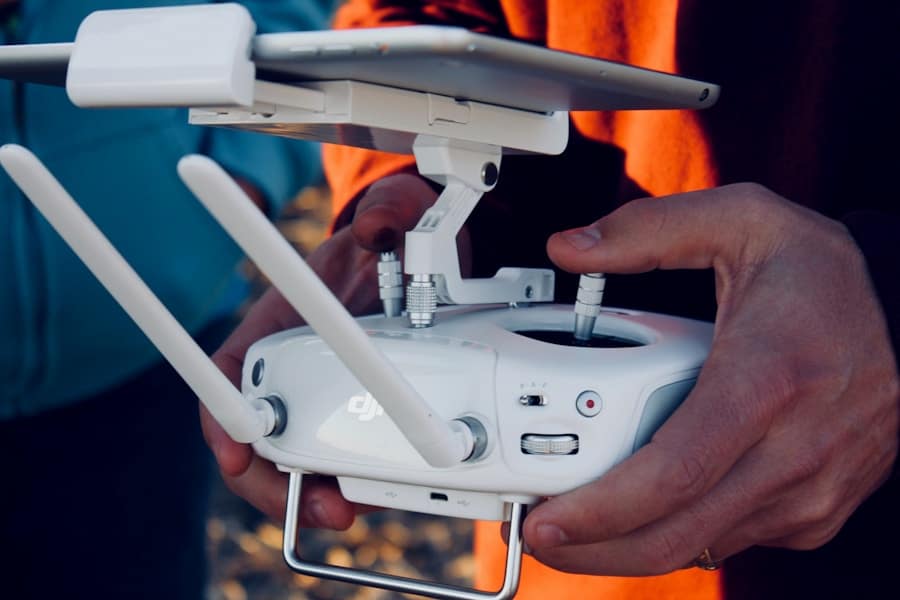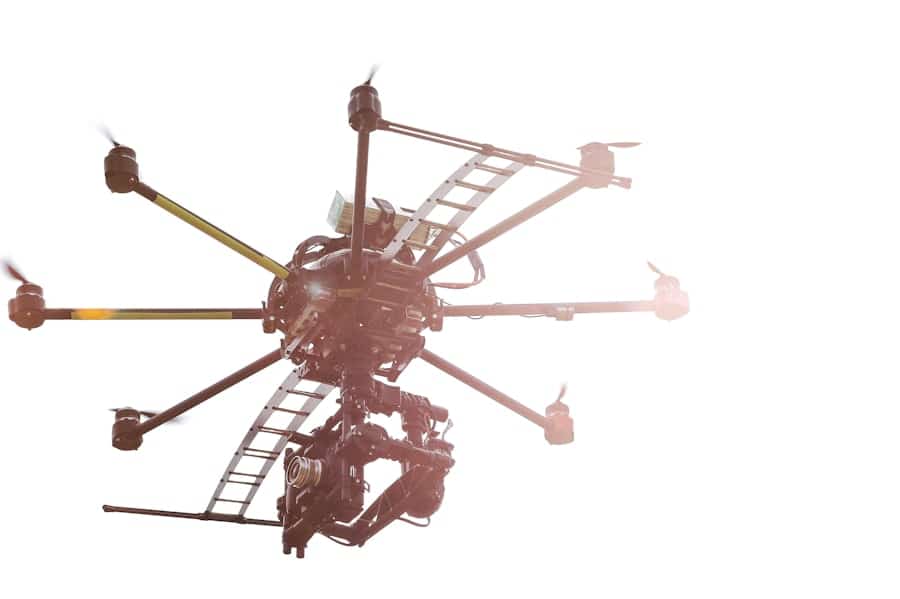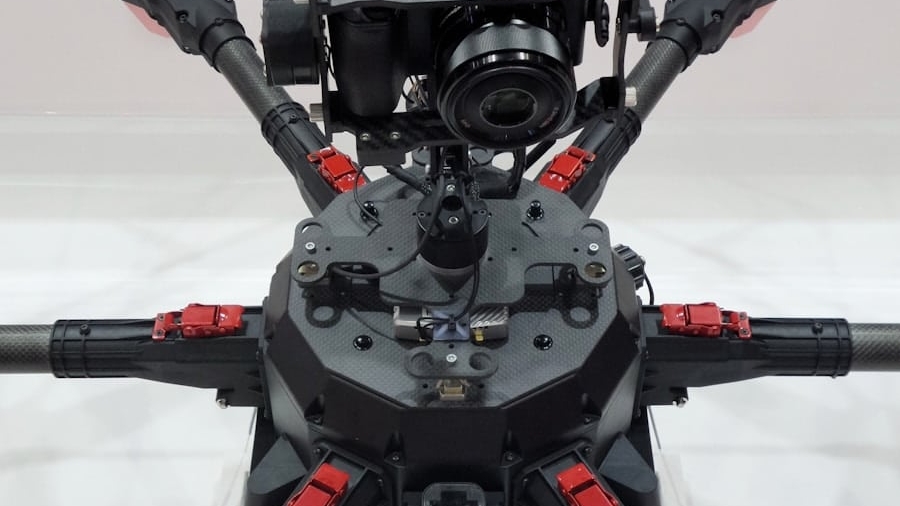Industrial drones, also known as unmanned aerial vehicles (UAVs), have emerged as transformative tools across various sectors, including construction, agriculture, and energy. These sophisticated machines are equipped with advanced sensors, cameras, and sometimes even payload delivery systems, enabling them to perform tasks that were once deemed too dangerous or impractical for human workers. The evolution of drone technology has been rapid, with improvements in battery life, flight stability, and data collection capabilities.
As industries seek to enhance efficiency and safety, the integration of drones into operational workflows has become increasingly prevalent. The application of industrial drones is particularly significant in hazardous environments where traditional methods pose risks to human safety. For instance, inspecting high-voltage power lines, assessing structural integrity in aging buildings, or monitoring environmental conditions in disaster-stricken areas are tasks that can be effectively managed by drones.
By leveraging aerial perspectives and real-time data collection, these devices not only streamline operations but also mitigate the dangers associated with hazardous repairs. As industries continue to embrace this technology, understanding the multifaceted role of industrial drones in hazardous repairs becomes essential.
Key Takeaways
- Industrial drones are unmanned aerial vehicles used for various applications in industries such as construction, oil and gas, and infrastructure maintenance.
- Industrial drones play a crucial role in hazardous repairs by providing access to hard-to-reach areas, reducing the need for human workers to enter dangerous environments.
- Using industrial drones for hazardous repairs offers advantages such as improved safety, cost-effectiveness, and efficiency in completing tasks.
- Challenges and limitations of industrial drones in hazardous repairs include limited payload capacity, battery life, and regulatory restrictions on flying in certain areas.
- Safety measures and regulations for industrial drones in hazardous repairs include proper training for operators, compliance with airspace regulations, and regular maintenance of the drones.
The Role of Industrial Drones in Hazardous Repairs
In the realm of hazardous repairs, industrial drones serve as invaluable assets that enhance both safety and efficiency. Their ability to access hard-to-reach locations without putting human lives at risk is one of their most significant advantages. For example, when inspecting the structural integrity of a bridge or a tall building, drones can fly over and around these structures, capturing high-resolution images and videos that provide critical insights into their condition.
This capability allows engineers and maintenance teams to identify potential issues such as cracks or corrosion without the need for scaffolding or climbing equipment. Moreover, drones equipped with thermal imaging cameras can detect heat anomalies in electrical systems or mechanical equipment. This is particularly useful in industries like oil and gas, where leaks or overheating can lead to catastrophic failures.
By identifying these issues early through aerial surveillance, companies can address problems proactively, reducing downtime and preventing accidents. The role of drones in hazardous repairs extends beyond mere inspection; they can also assist in the actual repair process by delivering tools or materials to remote locations, further enhancing operational efficiency.
Advantages of Using Industrial Drones for Hazardous Repairs

The advantages of employing industrial drones for hazardous repairs are manifold. One of the most compelling benefits is the significant reduction in risk to human workers. In environments where exposure to toxic substances, extreme heights, or unstable structures is a concern, drones can perform inspections and repairs without endangering personnel.
This not only protects workers but also reduces liability for companies, as fewer accidents translate to lower insurance costs and improved safety records. Additionally, drones can operate in conditions that would be challenging or impossible for humans. For instance, during natural disasters such as hurricanes or floods, drones can quickly assess damage in areas that are otherwise inaccessible due to debris or hazardous conditions.
Their ability to gather data rapidly allows for timely decision-making regarding repairs and recovery efforts. Furthermore, the data collected by drones can be analyzed using advanced software to create detailed reports and 3D models, providing stakeholders with comprehensive insights into the state of infrastructure. Another advantage lies in the cost-effectiveness of using drones for hazardous repairs.
Traditional methods often require extensive manpower and equipment, leading to high operational costs. In contrast, deploying drones can significantly reduce labor expenses while increasing the speed of inspections and repairs. For example, a drone can complete a thorough inspection of a large facility in a fraction of the time it would take a team of workers using conventional methods.
This efficiency not only saves money but also minimizes downtime, allowing businesses to resume operations more quickly.
Challenges and Limitations of Industrial Drones in Hazardous Repairs
Despite their numerous advantages, the use of industrial drones in hazardous repairs is not without challenges and limitations.
The operation of drones is subject to strict regulations imposed by aviation authorities in many countries.
These regulations often dictate where and how drones can be flown, which can limit their use in certain environments or during specific operations. For instance, flying a drone near airports or populated areas may require special permissions or adherence to specific flight paths.
While advancements have been made in battery life and payload capacity, many industrial drones still face restrictions regarding flight duration and range. In scenarios where extensive inspections are required over large areas or complex structures, the limited flight time can necessitate multiple drone deployments or battery changes, complicating operations. Additionally, adverse weather conditions such as high winds or heavy rain can hinder drone performance and reliability.
Moreover, there is a learning curve associated with operating drones effectively. While many operators can quickly learn to pilot a drone for basic tasks, mastering the technology for complex inspections requires specialized training and experience. This need for skilled operators can pose a barrier to widespread adoption in some industries.
Furthermore, integrating drone data into existing workflows may require additional software solutions and training for personnel who will analyze and act on the information collected.
Safety Measures and Regulations for Industrial Drones in Hazardous Repairs
To ensure the safe operation of industrial drones in hazardous environments, several safety measures and regulations have been established by aviation authorities worldwide. These regulations typically require drone operators to obtain licenses and certifications that demonstrate their competency in flying UAVs safely and responsibly. In many jurisdictions, operators must adhere to specific guidelines regarding altitude limits, no-fly zones, and visual line-of-sight requirements during operations.
In addition to regulatory compliance, companies utilizing drones for hazardous repairs must implement internal safety protocols. This includes conducting thorough risk assessments before each flight to identify potential hazards associated with the operation. For instance, if a drone is being deployed near power lines or other infrastructure, operators must ensure that they have contingency plans in place should an emergency arise during the flight.
Furthermore, regular maintenance and pre-flight checks are essential to ensure that drones are functioning correctly before each operation. This includes inspecting batteries, propellers, cameras, and other critical components to prevent malfunctions during flights. Training programs should also emphasize safety awareness among operators, ensuring they understand how to respond effectively to unexpected situations.
Case Studies: Successful Applications of Industrial Drones in Hazardous Repairs

Utility Companies: Inspecting Power Lines after Severe Weather Events
Following hurricanes or storms that cause extensive damage to electrical infrastructure, utility companies have deployed drones equipped with high-resolution cameras and thermal imaging technology to assess the condition of power lines quickly. This approach has enabled them to identify damaged sections efficiently and prioritize repairs while minimizing risks to ground crews.
Oil Rigs: Enhancing Safety and Accelerating Inspections
The oil and gas industry often faces challenges related to worker safety when conducting inspections on platforms exposed to harsh environmental conditions. By utilizing drones equipped with specialized sensors and cameras, companies have been able to conduct thorough inspections without sending personnel into potentially dangerous situations. This not only enhances safety but also accelerates the inspection process, allowing for quicker maintenance decisions.
Construction Sector: Monitoring Progress and Ensuring Safety
In the construction sector, a prominent construction firm employed drones to monitor progress on a large-scale infrastructure project involving multiple high-rise buildings. By using drones for aerial surveys and inspections, project managers were able to track construction milestones accurately while ensuring compliance with safety standards. The data collected from drone flights provided valuable insights into potential issues that could lead to delays or safety hazards on-site.
Future Developments and Innovations in Industrial Drones for Hazardous Repairs
The future of industrial drones in hazardous repairs is poised for significant advancements driven by ongoing technological innovations. One area of development is the integration of artificial intelligence (AI) into drone systems. AI algorithms can enhance data analysis capabilities by automatically identifying anomalies or potential issues during inspections based on historical data patterns.
This could lead to more proactive maintenance strategies and improved decision-making processes. Additionally, advancements in battery technology are expected to extend flight times significantly, allowing drones to cover larger areas without needing frequent recharges or battery swaps. Innovations such as solar-powered drones could further enhance operational efficiency by enabling longer missions without relying solely on traditional battery sources.
The incorporation of advanced sensors will also play a crucial role in the evolution of industrial drones for hazardous repairs. For instance, multispectral sensors could provide insights into material degradation that are not visible through standard imaging techniques. This capability would allow for more comprehensive assessments of infrastructure health and facilitate timely interventions before issues escalate into major problems.
Moreover, as regulatory frameworks continue to evolve alongside technological advancements, we may see increased acceptance of drone operations beyond visual line-of-sight (BVLOS). This would enable operators to conduct inspections over vast areas without needing constant visual contact with their UAVs, further enhancing efficiency in hazardous repair scenarios.
The Impact of Industrial Drones on the Future of Hazardous Repairs
The integration of industrial drones into hazardous repair operations marks a significant shift in how industries approach safety and efficiency challenges. By providing innovative solutions that minimize risks while maximizing operational effectiveness, these UAVs are reshaping traditional methodologies across various sectors. As technology continues to advance and regulatory frameworks adapt accordingly, the potential applications for industrial drones will expand even further.
The impact of this technology on hazardous repairs cannot be overstated; it represents a paradigm shift that prioritizes worker safety while enhancing productivity through rapid data collection and analysis capabilities. As industries increasingly recognize the value of incorporating drones into their workflows, we can expect continued growth in this field—ultimately leading to safer work environments and more efficient repair processes across diverse sectors worldwide.
If you are interested in the latest technology trends, you may also want to check out this article on conversational commerce. It explores how businesses are leveraging chatbots and messaging apps to enhance customer interactions and drive sales. Just like industrial drones are revolutionizing hazardous repairs, conversational commerce is reshaping the way companies engage with their customers in the digital age.
FAQs
What are industrial drones?
Industrial drones are unmanned aerial vehicles (UAVs) that are specifically designed and equipped for industrial applications, such as inspections, surveys, and repairs in hazardous environments.
How are industrial drones used for hazardous repairs?
Industrial drones are used for hazardous repairs by accessing hard-to-reach areas, such as tall structures, confined spaces, or areas with high levels of radiation or toxic chemicals. They can be equipped with specialized tools and cameras to perform repairs and inspections without putting human workers at risk.
What are the benefits of using industrial drones for hazardous repairs?
The benefits of using industrial drones for hazardous repairs include improved safety for workers, reduced downtime for repairs, cost savings, and the ability to access areas that are difficult or dangerous for humans to reach.
What types of hazardous repairs can industrial drones perform?
Industrial drones can perform a wide range of hazardous repairs, including structural inspections, equipment maintenance, pipeline repairs, and repairs in areas with high temperatures, radiation, or chemical exposure.
What are the limitations of using industrial drones for hazardous repairs?
The limitations of using industrial drones for hazardous repairs include the need for skilled operators, limitations on payload capacity, and restrictions on flight in certain environments, such as areas with high winds or limited airspace.

